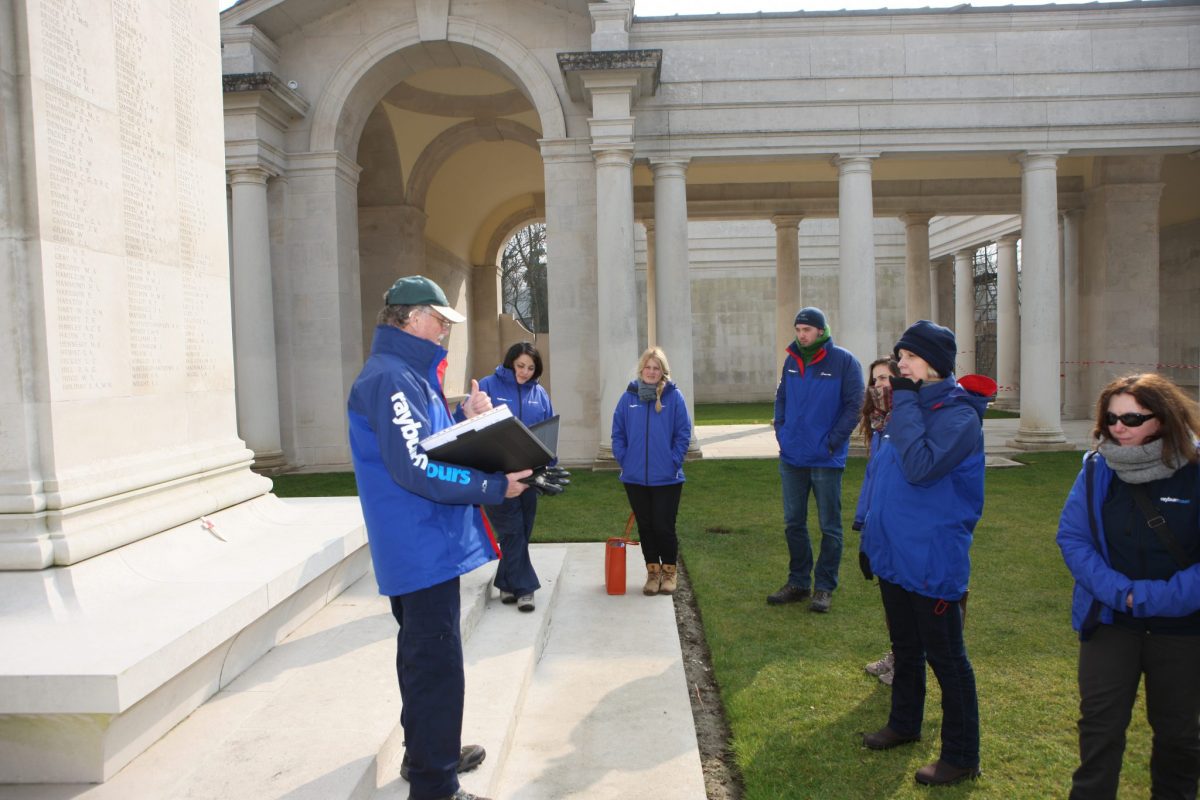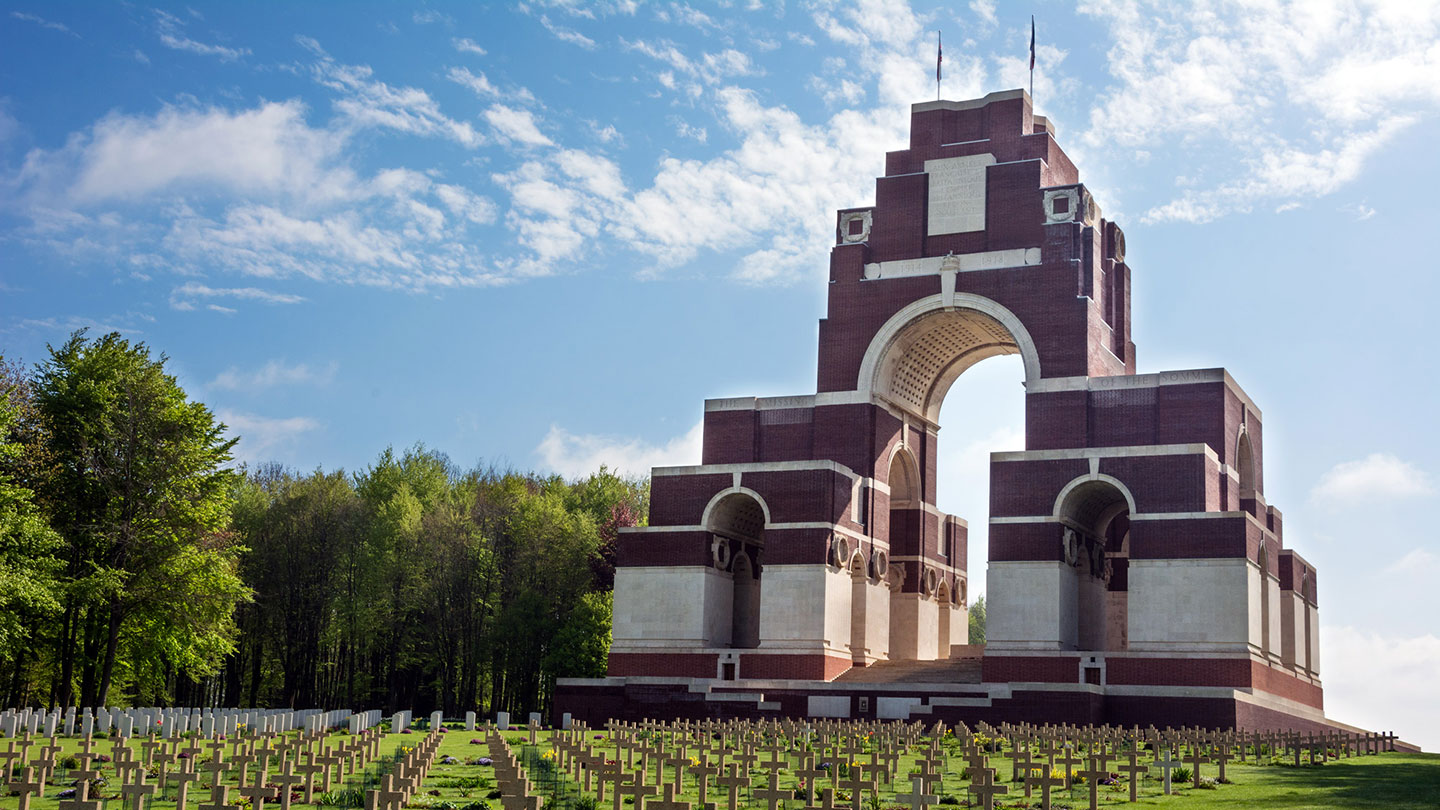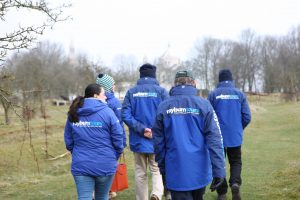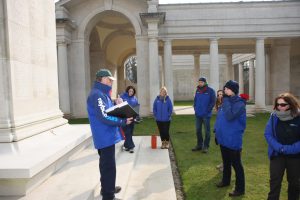

Just before Easter I packed my bag, my new Rayburn Tours waterproof (yay!) and got myself to the M4 services for 7.00am. I was on my way to meet some of the guides that I’ve been training for the Rayburn history tours.
Two hours later we had picked up the rest of the party of guides and Rayburn office staff at the Maidstone services, and we were on our way to the Western Front. This was the second stage of our Western Front training.
I have been going down to the Somme valley for a number of years now, and this trip with the guides was to ensure that everyone had up-to-date knowledge of the area and a good understanding of the themes explored on the First World War in schools. Being the history geeks that we are, the trip also gave us the chance to check out a couple of less familiar sites, a new memorial and bounce ideas off each other. For the Rayburn office staff it was an opportunity to see our experienced and knowledgeable guides in action, view some of the places they take people through and audit some accommodation.

First stop, the Loos battlefield! Most people drive past the Loos battlefield on their way to the sites further south around Albert, but not us – it’s fascinating! The Battle of Loos is one of the earlier battles and should be far more well-known (well, it was until the Somme came along and knocked everything else away). The Battle of Loos was the largest British Offensive on the Western Front in 1915 and took Rudyard Kipling’s son and the Queen’s uncle. It is a fascinating stop to explore the British army of the pre-Somme period, and how it was developing as a force since the opening battles of 1914. After standing on the windswept landscape discussing what could be addressed there for schools (and the answer is quite a lot), we moved on to the new French memorial – The Ring of Remembrance.
The new memorial only opened in November 2014. The Notre Dame de Lorette memorialises all those killed in that area from all sides, and lists their names alphabetically with no indication of nationality. It is an incredible memorial and extremely moving, as well as educationally very useful – it certainly gets my recommendation. We stopped here to ensure that all of our Rayburn guides were fully trained on how to make the best of the site. Some of the names here are so familiar, while the number of names is a real indication of the loss of the years 1914 -18.

How to bring a site to life, harness its information to impart a wider context, and draw in individual themes was a key element of the training. Anyone can read guide books and study the history, but the job of a history guide is to know how different sites can address different themes, and how they can link to other areas and deliver a wider understanding. We had one more site before heading to the accommodation – some trenches and another much overlooked battle.
By 8.00pm we were at dinner. I knew it had been a good day because the dinner discussion was all about how to use the sites we’d seen, and how we can tell teachers about the value of adding different sites to the tours that they’re usually offered, rather than our usual chit chat. Everyone was tired but engaged, which was good news because we still had two more days to go!